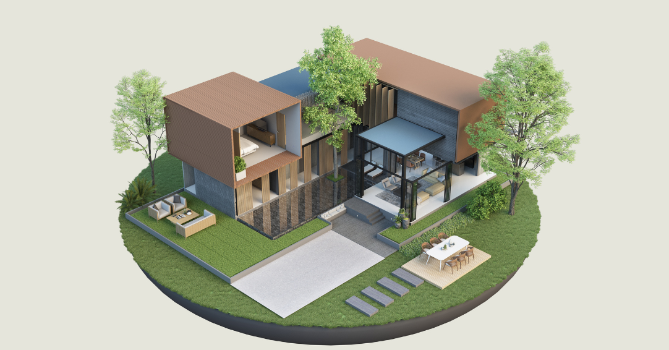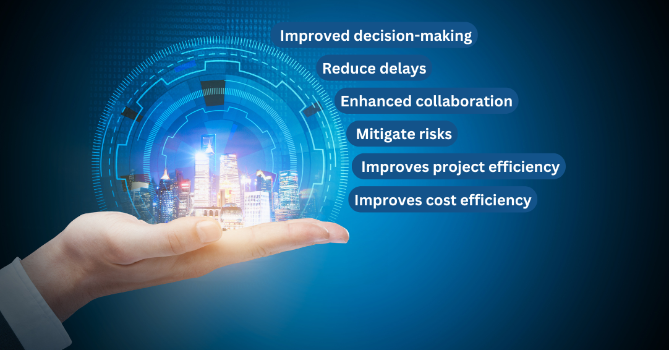.png)
Mastering Outcome-Based Modeling in BIM: A Comprehensive Guide
Introduction: The Rise of Outcome-Based Modeling in BIM
The construction industry is constantly evolving, with technology playing a major role in shaping its future. Traditional project management methods often focus on tracking activities and managing timelines. However, outcome-based modeling in BIM (Building Information Modeling) is changing this approach. It shifts the focus from merely completing tasks to achieving specific results that benefit all stakeholders. This model prioritizes efficiency, safety, and sustainability, making it easier to meet project goals.
By setting clear objectives and using advanced data analysis, outcome-based modeling enables teams to anticipate issues and make informed decisions. As a result, projects see improved collaboration, fewer delays, and reduced costs. With the rise of AI and other advanced technologies, this method is becoming essential for modern construction projects. As companies continue to adopt outcome-based BIM, they’re setting a new standard for project delivery that’s both data-driven and highly effective.
What is Outcome-Based Modeling in BIM?
Outcome-based modeling in BIM is a modern approach that shifts the focus from simply tracking project activities to achieving specific, measurable results. Instead of focusing solely on the completion of tasks, this model prioritizes the end goals of a project, such as cost efficiency, safety standards, and overall performance.

In traditional project management, the emphasis is often on managing time and resources. However, outcome-based modeling takes a broader perspective by setting key performance indicators (KPIs) that define project success. These KPIs might include reducing project delays, cutting down on rework, or enhancing collaboration among teams. With outcome-based BIM, project teams can proactively manage these factors and anticipate potential issues before they escalate.
This approach also leverages advanced data analytics and real-time feedback to optimize project delivery. By incorporating AI and other emerging technologies, outcome-based modeling provides construction professionals with deeper insights into project dynamics. This enables them to make data-driven decisions that align with the overall project goals. As a result, teams can reduce risks, streamline communication, and achieve outcomes that are more aligned with client expectations. Outcome-based modeling is becoming the new norm, as it helps set projects up for long-term success and measurable results.
Benefits of Outcome-Based Modeling
Outcome-based modeling in BIM offers a range of benefits that go beyond traditional project management methods. One of the key advantages is improved decision-making. By setting clear goals and measuring outcomes, teams can identify potential roadblocks early and take corrective actions before issues escalate. This proactive approach helps reduce delays and ensures projects stay on track.
Another major benefit is enhanced collaboration. Outcome-based modeling fosters better communication among stakeholders by aligning everyone towards the same goals. When the entire team understands the desired outcomes, they are more likely to work together effectively, leading to fewer misunderstandings and conflicts.

Additionally, outcome-based modeling helps mitigate risks. By using real-time data and predictive analytics, project managers can foresee challenges such as cost overruns or resource shortages and take preventive measures. This not only improves project efficiency but also reduces the likelihood of expensive rework or disruptions.
There’s also a focus on cost efficiency. With well-defined goals, resources can be allocated more effectively, avoiding wastage and optimizing productivity. This model is particularly useful in large-scale projects where even small inefficiencies can lead to significant cost impacts.
Lastly, outcome-based modeling aligns project goals with client expectations. By delivering on predefined objectives, projects are more likely to meet or exceed client satisfaction, which strengthens long-term business relationships and establishes a company’s credibility in the market.
AI’s Role in Enhancing Outcome-Based Modeling
AI is revolutionizing outcome-based modeling in BIM by enabling smarter and faster decision-making. Through predictive analytics, machine learning, and automated data processing, AI can forecast potential project issues and suggest solutions before problems arise. This capability is crucial for keeping projects on schedule and within budget.

One key area where AI adds value is in predicting project outcomes. By analyzing historical data, AI algorithms can identify patterns and trends that might be missed by human observation. This helps project managers anticipate delays, resource shortages, or cost overruns, allowing them to take corrective actions proactively.
AI also enhances resource optimization. By assessing real-time data from various sources, AI can allocate resources more efficiently, ensuring that labor, materials, and equipment are used effectively. This leads to reduced waste and increased productivity.
Additionally, AI-powered tools facilitate better communication across teams. They provide a centralized platform for sharing insights and updates, ensuring that all stakeholders are aligned on project goals and status.
By integrating AI into outcome-based modeling, construction teams can not only achieve better project outcomes but also gain deeper insights into their operations, making them more adaptable to changes and more competitive in the industry.
Practical Application: How to Implement Outcome-Based BIM
Implementing outcome-based BIM requires a clear strategy and step-by-step planning. Start by defining project goals. Set specific, measurable outcomes that align with client expectations and overall project objectives. Establishing clear KPIs (Key Performance Indicators) is crucial to monitor progress effectively.

Next, ensure that the BIM model is structured around these outcomes. This includes creating a model that not only represents the physical aspects of the project but also integrates the data needed to track these KPIs. Use features like clash detection, quantity takeoffs, and cost analysis to support your desired results.
Assign roles and responsibilities to team members, ensuring everyone understands how their contributions affect the overall outcomes. Regular communication is key, so set up collaborative platforms where real-time updates and data can be shared seamlessly.
Leverage data analytics and AI tools to monitor performance. These technologies can provide insights into project trends and suggest optimizations, making it easier to stay on track.
Lastly, adopt an iterative review process. Continuously compare the project’s performance against the KPIs and make adjustments as necessary. This approach ensures that the team stays focused on achieving the desired outcomes, ultimately leading to more successful project completions.
Challenges and Solutions in Outcome-Based Modeling
Adopting outcome-based modeling in BIM can come with several challenges. One common hurdle is resistance to change. Teams accustomed to traditional methods may find it difficult to shift to an outcome-based approach. To address this, provide thorough training and emphasize the benefits of this new model.
Another challenge is high initial costs. Implementing new tools and technologies for outcome-based modeling can be expensive. However, these costs can be mitigated by demonstrating long-term ROI through increased project efficiency and reduced errors.
Finally, data management issues can arise due to the volume of information being tracked. To overcome this, use AI-driven data processing tools that organize and analyze data effectively. By addressing these challenges proactively, companies can ensure a smoother transition and greater success with outcome-based BIM.
Future Trends: The Evolution of Outcome-Based BIM
Outcome-based BIM is set to evolve with advancements in AI, digital twins, and real-time data integration. As technology progresses, digital twins will play a bigger role in enhancing project visualization and monitoring, providing a digital replica that updates as changes occur on-site. This allows for a seamless connection between the physical and digital environments, leading to better outcomes.

Additionally, AI-driven predictive analytics will become more sophisticated, enabling deeper insights into project performance and improving decision-making. Sustainable construction practices are also likely to benefit, as outcome-based BIM can track environmental impact and optimize resource usage. The push for sustainability will drive the adoption of these models further, aligning construction projects with global green initiatives.
These trends signal a future where outcome-based BIM is not just an option but a standard for efficient and intelligent project delivery.
Conclusion
Outcome-based modeling in BIM is transforming the construction industry by shifting the focus from merely completing tasks to achieving specific, measurable outcomes. This approach, when combined with AI and other advanced technologies, helps teams anticipate challenges, optimize resources, and deliver projects more efficiently. As BIM continues to evolve, embracing these practices will be crucial for companies aiming to stay competitive. By setting clear goals and leveraging real-time data, outcome-based modeling ensures that projects are completed on time, within budget, and to the highest standards of quality.